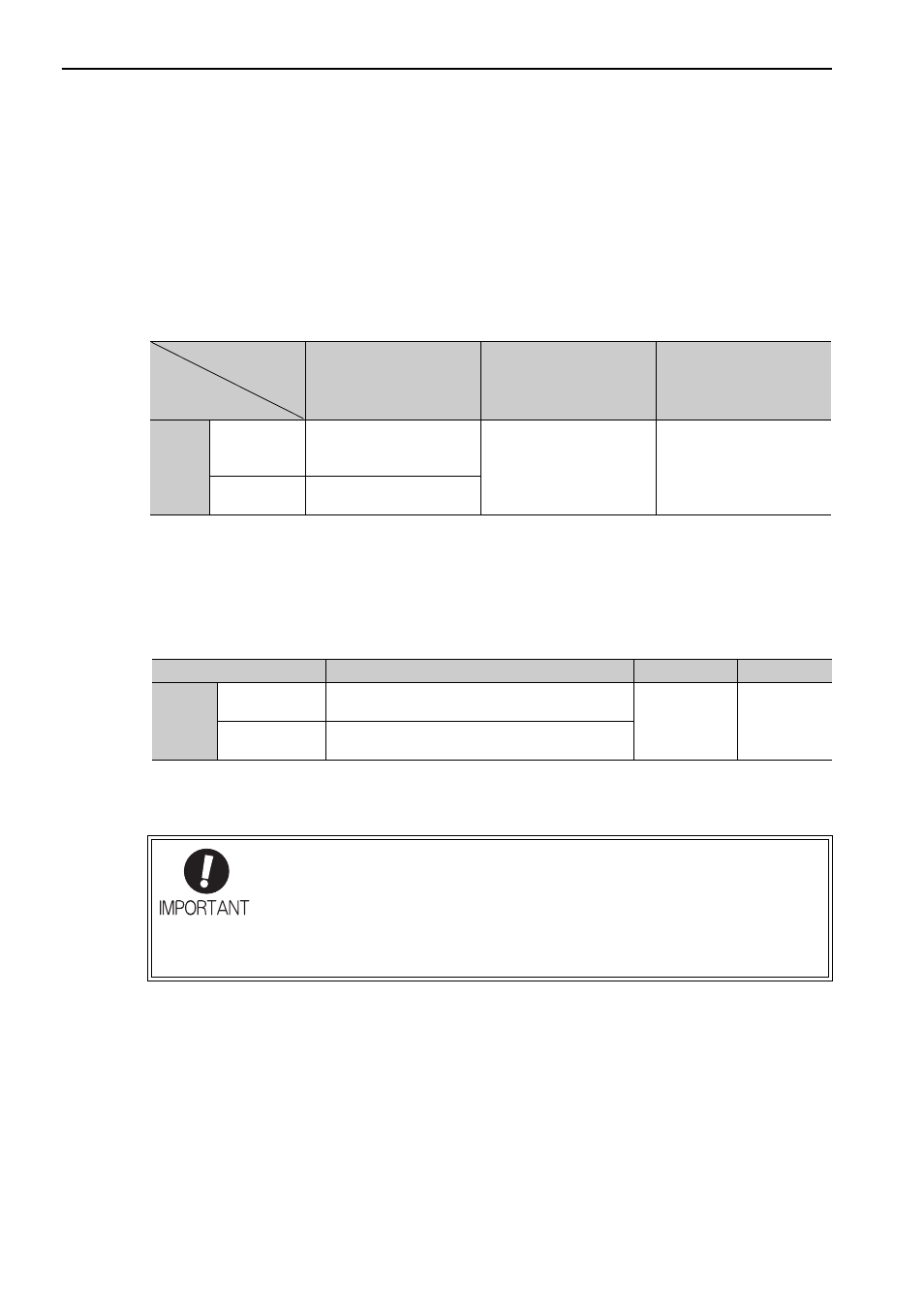Yaskawa Sigma-5 User Manual: Design and Maintenance - Linear Motors MECHATROLINK-III Communications Reference User Manual
Page 174

5 Adjustments
5.3.2 Advanced Autotuning Procedure
5-24
Friction Compensation
This function compensates for changes in the following conditions.
• Changes in the viscous resistance of the lubricant, such as the grease, on the sliding parts of the machine
• Changes in the friction resistance resulting from variations in the machine assembly
• Changes in the friction resistance due to aging
The conditions for applying friction compensation depend on the mode. The friction compensation setting in
Pn408.3 applies when the Mode is 1. The friction compensation function is always enabled regardless of the
friction compensation setting in Pn408.3 when the Mode is 2 or 3.
Feedforward
If Pn140 is set to the factory setting and the mode setting is changed to 2 or 3, the feedforward gain (Pn109),
speed feedforward (VFF) input, and force feedforward (TFF) input will be disabled.
Set Pn140.3 to 1 if model following control is used together with the speed feedforward (VFF) input and force
feedforward (TFF) input from the host controller.
Refer to
Σ
-V Series User’s Manual MECHATROLINK-III Standard Servo Profile Commands (No.: SIEP
S800000 63) for details.
Mode = 1
Mode = 2
Mode = 3
Pn408
n.0
[Factory
setting]
Adjusted without the friction
compensation function
Adjusted with the friction
compensation function
Adjusted with the friction
compensation function
n.1
Adjusted with the friction
compensation function
Mode
Friction
Compensation
Selecting
Parameter
Function
When Enabled Classification
Pn140
n.0
[Factory setting]
Model following control is not used together with the
speed/force feedforward input.
Immediately
Tuning
n.1
Model following control is used together with the
speed/force feedforward input.
• Model following control is used to make optimum feedforward settings in the SERVO-
PACK when model following control is used with the feedforward function. Therefore,
model following control is not normally used together with either the speed feedfor-
ward (VFF) input or force feedforward (TFF) input from the host controller. However,
model following control can be used with the speed feedforward (VFF) input or force
feedforward (TFF) input if required. An improper feedforward input may result in over-
shooting.